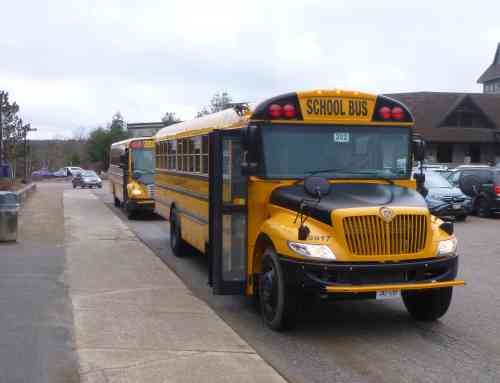Our son Peter went to an American High School in rural Ohio last year. This is what he experienced there and we think that this is a valuable information for families moving to the USA. Sure, not all schools are alike and there are many differences between the regions in the USA. However, his report provides an insight into American school life. Such an outlook is also part of our intercultural training for families.
Full day school and more freedom for completing tasks
The school starts at 7.55 am and ends at 3.15pm. It is quite a difference to Germany or other countries. The high school has 9 different periods which last 45 min. At the beginning of every schoolyear every student chooses his subjects. Schools in America are technologically more advanced compared to Germany. In my opinion, the classes and the teachers have more faith in the students in the US than in other countries. When they tell the students to do something, it is up to the students how to do it. This is great for some kids because a lot of teenagers in high school wish for more independence.
Don´t be late
The doors are with a sensor that gets triggered after the ringing of the first period bell. This sensor then locks the door, so if you are late you have to go to the office and get a card that you have to give to your teacher. The card tells the teacher how late you were and the teacher can give you detention if you have too many (tardy) cards.
Lunch break and surveillance
Between every period you have 4 minutes time to get to your next class or to use the bathroom. Between the 6th and 7th period there is a Lunch break where the kids can get their lunches in the school. If they or their friends have a car, they might go to a nearby restaurant. The schools have cameras in the hallways so they can detect if anybody is skipping school or something happens. That way they have proof on video.
Up to date technology
The classes are different too. For example, the students use laptops, mostly Chromebooks, in class and the teachers use google classroom on which they post all information that they had talked about in class. A lot of teachers use smartboards in class.
Grading system
The grading system is different, too. The schools use A, B, C, D, F grades of which A is the best and F is the worst. The school posts the student grades in a file on the school´s main website. If the student or his/her parents want to know their grades, they need to identify themselves with an I.D. Then they can check the grades all the time. It also shows you what was graded how it was graded.
Sports and clubs
Most students play a high school sport or join a club. In these clubs, the students find most of their friends. They have the same goals and work as a team to win. That makes Americans love their high school and they are very proud of their teams. Some schools even have school rivals which they don’t like very much and during games even start booing the other team out. If a student has one F for more than 3 weeks then he can get expelled for the team until his grades get up again. The schools use these techniques to keep the kids motivated in class and on the field. Coaches are the best people in school, besides your friends, who might help you with problems. You might get to know them a bit better over time and me personally have seen great bonds between coaches and their students.
Intercultural experiences – preparation needed
As you have learned from these first-hand impressions, the school system in the USA is quite different from that in Germany. Both systems have their merits and disadvantages. In any case, going to school in the USA is quite a challenge in the beginning for German kids. Experience shows that once they get settled, they like I a lot. I would like to add that in American schools, and not only there, there is a different code of conduct and newcomers must look out what they talk about. This concerns, for example, the weapon laws. How to deal with this and much information will be provided in our family trainings. This preparation is especially valuable for kids who have to settle in a completely new environment and deal with a different culture shock than adults.





































